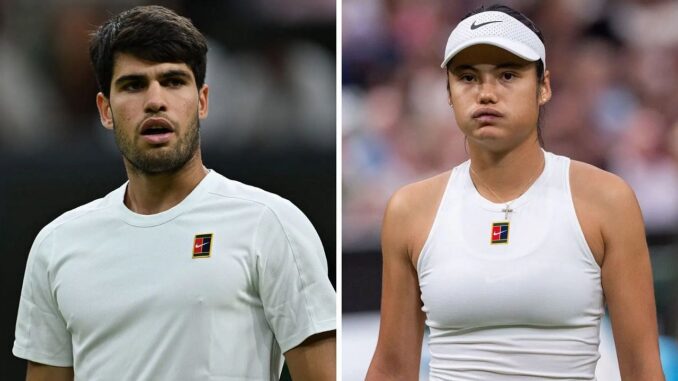
The allure of Grand Slam tennis lies not only in the pursuit of glory but also in the substantial financial rewards that come with competing at the sport’s pinnacle. The 2025 Wimbledon Championships, with its record-breaking £53.5 million prize pool, underscored this, offering £3 million to each singles champion. Yet, for players like Emma Raducanu, Carlos Alcaraz, and Jannik Sinner, the hefty cheques they earn are significantly reduced by taxes and expenses, with some losing nearly half their winnings. As fans marvel at the on-court heroics, the behind-the-scenes process of prize money distribution reveals a complex reality for tennis’s biggest stars.
Tennis players typically receive their Grand Slam prize money within 7 to 10 days after the tournament concludes, delivered via wire transfer following tax deductions. Unlike many sports, tennis players are taxed based on the country where the tournament is held, not their home nation, meaning they don’t face double taxation upon returning home. For Raducanu, her third-round exit at Wimbledon 2025 against Aryna Sabalenka earned her £152,000, a notable sum for the 22-year-old Brit. However, as a UK citizen with income exceeding £125,140, she faced a 45% tax rate, resulting in a £68,400 tax bill, plus an additional £3,040 in Class Four National Insurance. “Assuming that Emma is an additional rate taxpayer, the tax rate that will apply to the prize money will be 45 per cent resulting in a UK tax liability of £68,400,” tax experts noted. After these deductions, Raducanu’s take-home pay was approximately £80,560, before accounting for personal expenses like travel, accommodation, and coaching fees, which further erode earnings.
Similarly, at the 2025 French Open, Carlos Alcaraz’s epic five-set victory over Jannik Sinner netted him €2.55 million (£2.13 million), but French tax laws claimed up to 46%, leaving him with roughly $1.624 million. Sinner, the runner-up, earned €1.275 million (£1.07 million) but faced a comparable tax hit, pocketing about half after deductions. “The amount of tax money a tennis player will pay on prize money will depend exclusively on the location where the money was earned,” industry insiders explained, highlighting the global nature of tennis taxation. Alcaraz, ever pragmatic, shared his modest spending habits: “Maybe not after every big win, but for example, at the Grand Slams, if I reach the semi-finals, I like to buy myself a new pair of sneakers.” His lighthearted approach contrasts with the financial complexities players navigate.
The 2025 Grand Slam prize pools reflect the sport’s growing wealth. The Australian Open offered $96.5 million, the French Open €49.6 million, and the US Open a staggering $75 million, with Wimbledon’s £53.5 million setting a new benchmark. Champions at the US Open earned $3.6 million, while first-round losers at events like the Miami Open pocketed $23,760, illustrating the exponential payout structure. However, players receive only 12-20% of tournament revenues, compared to 50% in sports like the NFL or NBA, a disparity that has sparked calls for reform. “The fight for fair compensation has a long history in tennis,” advocates note, citing milestones like the 1973 US Open’s gender pay parity and Venus Williams’ 2007 push for Wimbledon’s equal prize money.
For players like Raducanu, whose career earnings stand at $5.1 million, and Alcaraz, with $44.7 million, the financial stakes are high but come with caveats. Sponsorships—Raducanu’s deals with Dior and Porsche, or Alcaraz’s with Nike and Rolex—bolster their income, but on-court earnings remain heavily taxed. The Professional Tennis Players Association (PTPA) continues to push for a larger share of revenues, arguing that the sport’s top-heavy prize distribution favors elites like Alcaraz and Sinner, who earned $7.42 million and $41.5 million respectively in 2025. As the tennis world celebrates its stars, the reality of prize money distribution—swift but heavily taxed—reminds players that every forehand comes with a financial catch.
Leave a Reply